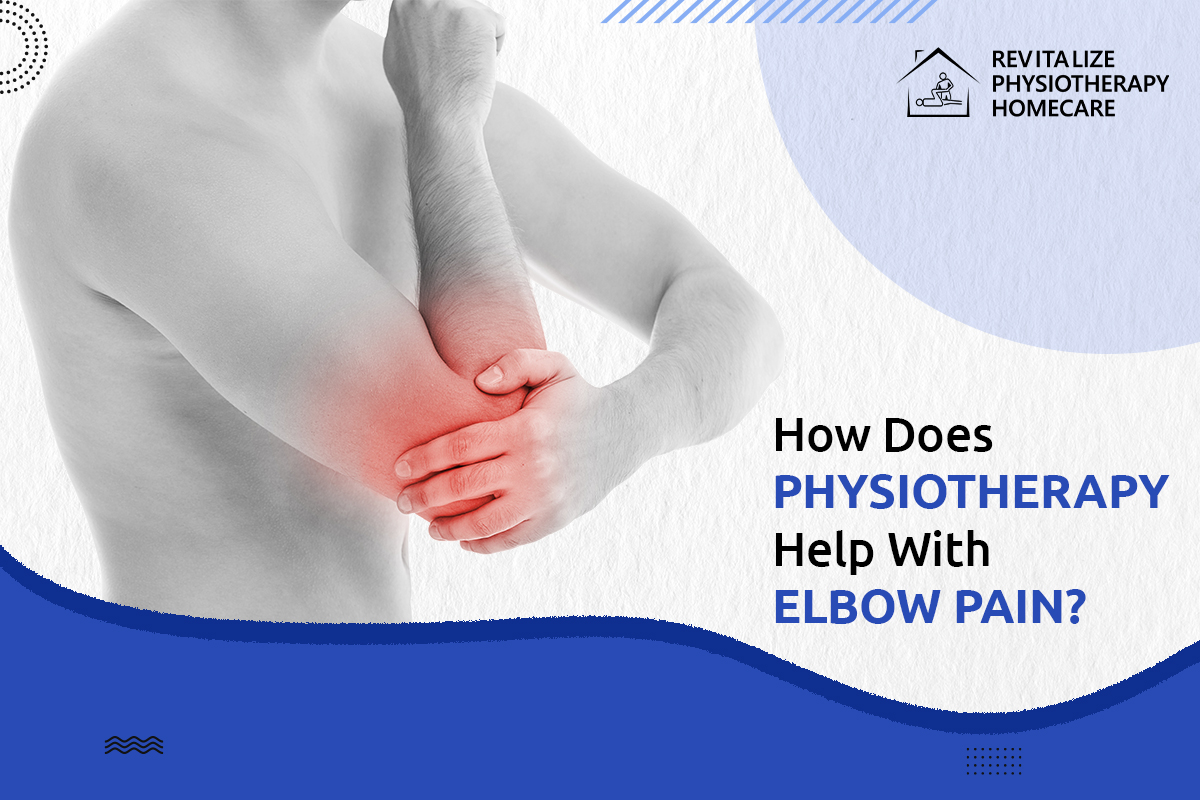How Does Physiotherapy Help With Elbow Pain?
Elbow pain can sneak up on you at any time if you love playing sports. It starts small, maybe a little niggle when you pour coffee or wave to a friend. Then, it grows, turning everyday tasks into challenges. What can you do in this situation?
Physiotherapy is a shining light for those struggling with this discomfort. It is not only about easing the pain; it is about understanding it, finding its root, and showing it the door. In sports and metro cities, where active lives are the norm, undergoing elbow pain treatment Brampton is essential.
This blog will walk you through how physiotherapy turns the tables on elbow pain. This is a journey from ouch to aha, showing you ways to heal and strengthen your elbow. Whether it's tennis elbow or a strain from too much typing, there's a path to relief.
Let's dive into how physiotherapy can be your ally against elbow pain, making your days brighter and your movements easier. But before that, let’s learn about what is elbow joint and what causes it to hurt.
What is Elbow Pain?
The elbow is the joint found at the tip of the forearm and upper arm. It consists of three bones.
- Ulnohumeral Joint: connects the large forearm bone to the upper arm bone
- Humeroradial joint: connects the smaller forearm bone with the upper arm bone.
- Superior Radioulnar Joint: located below the elbow between the two forearm bones
Muscles, tendons, and ligaments of the elbow joint work together for tasks like reaching and holding objects. Often, the elbow is the first joint to be injured. This might happen if someone trips and falls or gets into a vehicle or sports accident.
This triggered pain due to the inflammation of the muscles, tendons, or ligaments in the elbow. Also, elbow injuries can be excruciating, acute, and sudden, or sometimes dull and lingering.
Know How Physiotherapy Helps with Elbow Pain
1. Assessment and Diagnosis
First off, figuring out what's wrong is key. A physiotherapist takes a good look at your elbow to find out why it hurts. They might check how you move, look for swelling, or ask about your daily activities. This step is like solving a puzzle; it helps them make a plan just for you. Knowing exactly what's causing the pain means they can pick the best ways to help you feel better and get your elbow working right again.
2. Pain Management Techniques
Next, easing the pain is the goal. Physiotherapy uses cool tricks like ice packs, gentle electric pulses, or sound waves to help calm down swelling and pain. These methods are like a first-aid kit for your elbow, offering quick relief so you can move on to the next steps of healing. Also, they're quite beneficial after you've hurt your elbow. It sets the stage for more active treatments to help you heal faster and stronger.
3. Customized Exercise Programs
Strengthening your elbow is crucial. Your physiotherapist will show you special exercises designed just for your situation. These exercises make the muscles around your elbow stronger, which helps take some of the pressure off the sore spot. It's a bit like training for a sport; you're building up the muscles so they can protect and support your elbow better. Doing these exercises regularly can help keep the pain away for good.
4. Manual Therapy
Sometimes, your elbow needs a hands-on approach. Manual therapy means your physiotherapist uses their hands to gently move and massage the elbow. This can help loosen up tight muscles, get your elbow moving smoothly, and cut down on pain. Think of it like oiling a squeaky hinge; it helps everything move better. This method is really good for elbows that are stiff or not moving as well as they should.
5. Ergonomic and Activity Modification Advice
How you move matters. Your physiotherapist will give you tips on how to tweak your daily tasks to keep from hurting your elbow again. This could mean setting up your desk differently, changing how you lift things, or even adjusting your sports technique. It’s all about making smart changes to protect your elbow while you do your thing. These little adjustments can make a big difference in keeping you pain-free.
6. Education and Self-Management Strategies
Knowing more about your elbow lets you take charge of your healing. Your physiotherapist will teach you all about what’s causing your pain and show you ways to deal with it on your own. This might include how to do your exercises at home, when to take a break, and how to use support if you need it. It’s like getting the tools and the manual so you can keep your elbow feeling good.
7. Preventive Measures and Long-term Management
Keeping your elbow healthy in the long run is the goal. Your physiotherapist will help you put together a plan to keep your elbow strong and flexible. This plan includes exercises to keep doing, advice on what activities to be careful with, and tips on how to handle any new pain that pops up. It’s about staying one step ahead of the pain, so you can keep doing what you love without elbow trouble getting in the way.
Treat Your Elbow Pain with Revitalize Physiocare
Elbow pain can be a difficult experience for a lot of individuals. It makes it difficult for you to carry out your normal activities. However, physiotherapy can help you manage elbow pain through a multifaceted approach. It addresses not only the symptoms but the underlying causes also.
Whether seeking elbow pain treatment at home or the clinic, the role of physiotherapy is undeniable. Revitalize Physiocare offers the best physiotherapy treatment for elbow pain and stiffness. Our expert physiotherapist offers efficient physiotherapy exercises for elbow discomfort. If you're seeking the best physiotherapy in Brampton, set an appointment with us now.
Call us at 905-452-0222 or send an email to us at revitalizephysio@gmail.com.




